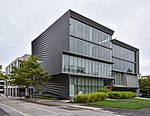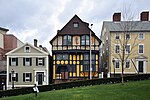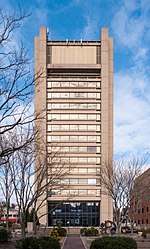Rites and Reason Theatre
African-American theatreBrown UniversityHistorically African-American theaters and music venuesTheatres in Rhode Island
Rites and Reason Theatre is a theater within the Africana Studies department of Brown University in Providence, Rhode Island. It was founded in 1970 by Professor George Houston Bass, and is one of the longest-running continuously producing black theaters in the United States. Writers for the theater have included Ossie Davis, Ruby Dee, and Adrienne Kennedy. The theatre serves to develop theatrical and visual performance works that articulate and understand the expansive African Diaspora.
Excerpt from the Wikipedia article Rites and Reason Theatre (License: CC BY-SA 3.0, Authors).Rites and Reason Theatre
Angell Street, Providence
Geographical coordinates (GPS) Address Nearby Places Show on map
Geographical coordinates (GPS)
| Latitude | Longitude |
|---|---|
| N 41.82773 ° | E -71.40159 ° |
Address
Churchill House
Angell Street 155
02912 Providence
Rhode Island, United States
Open on Google Maps










